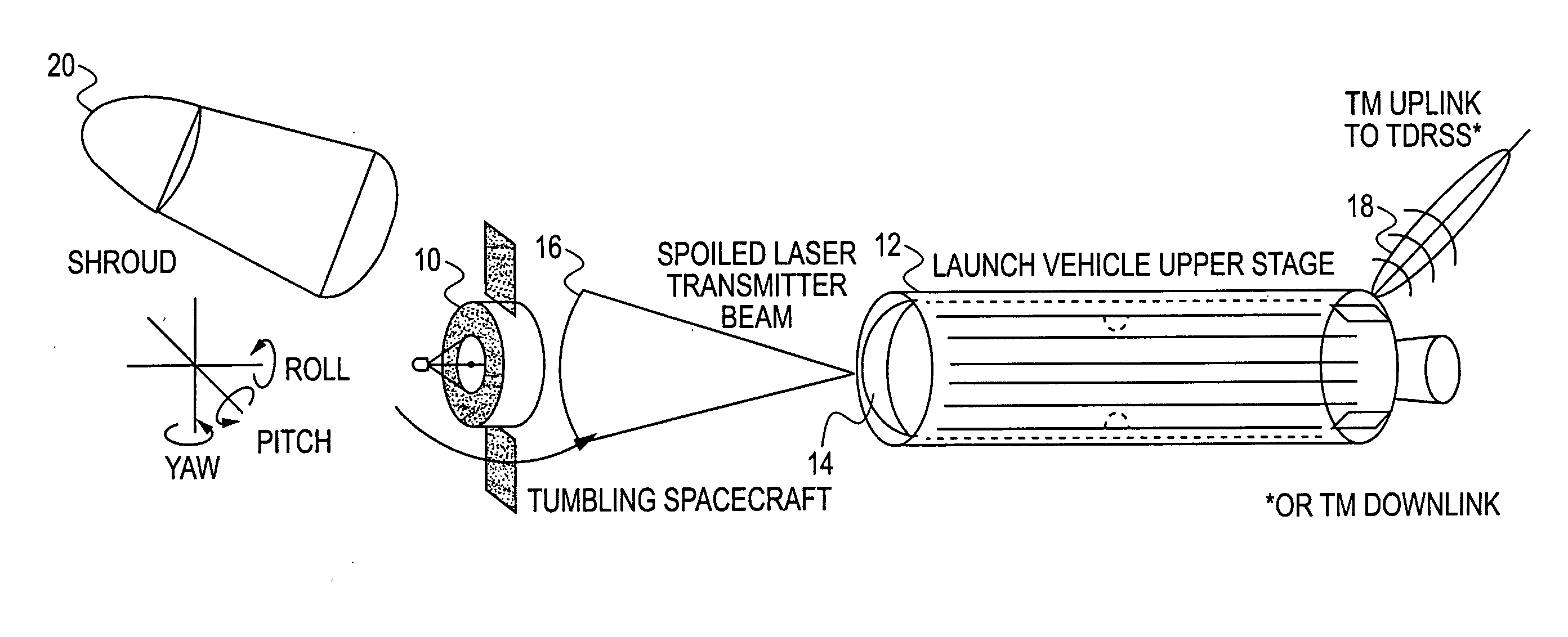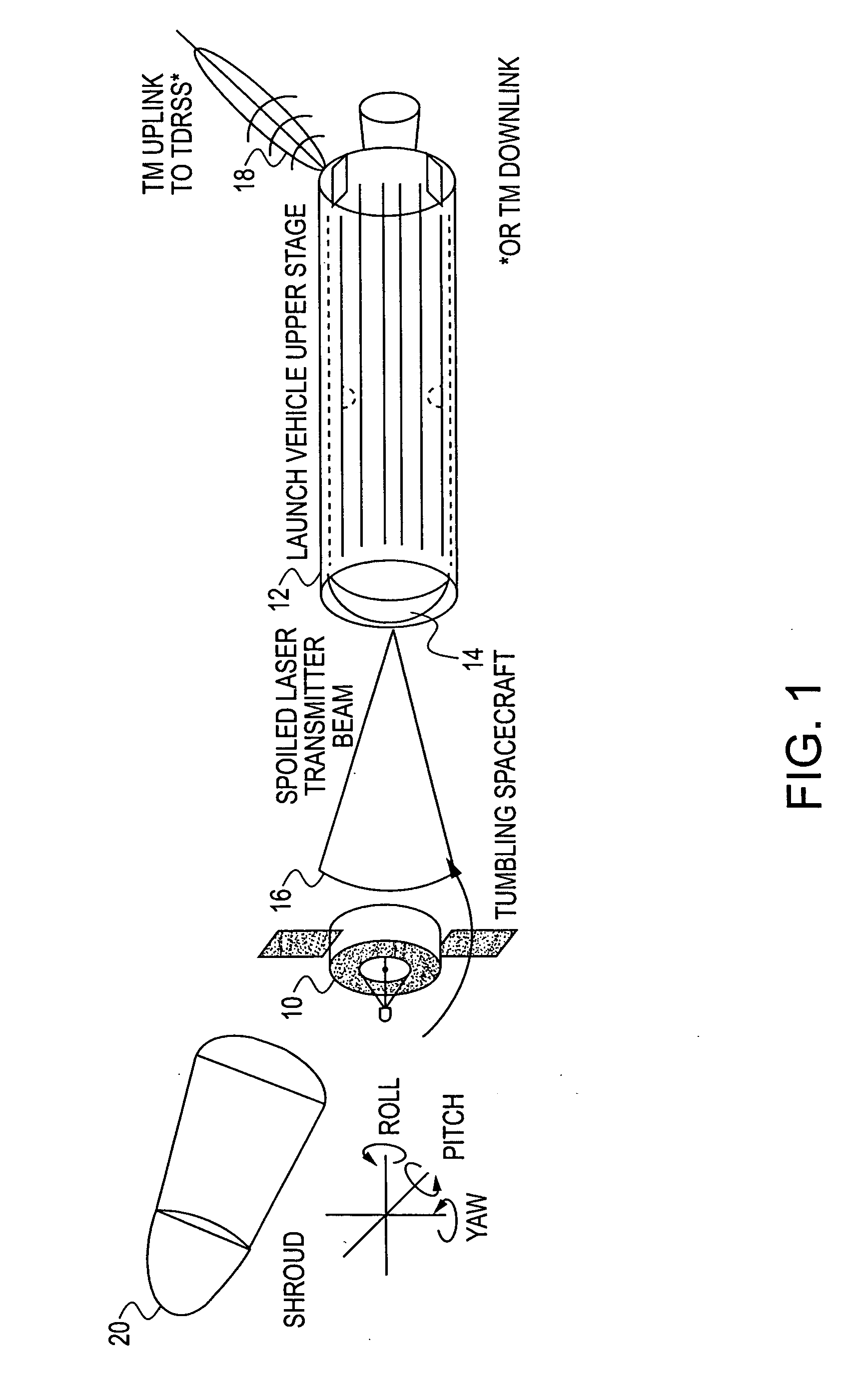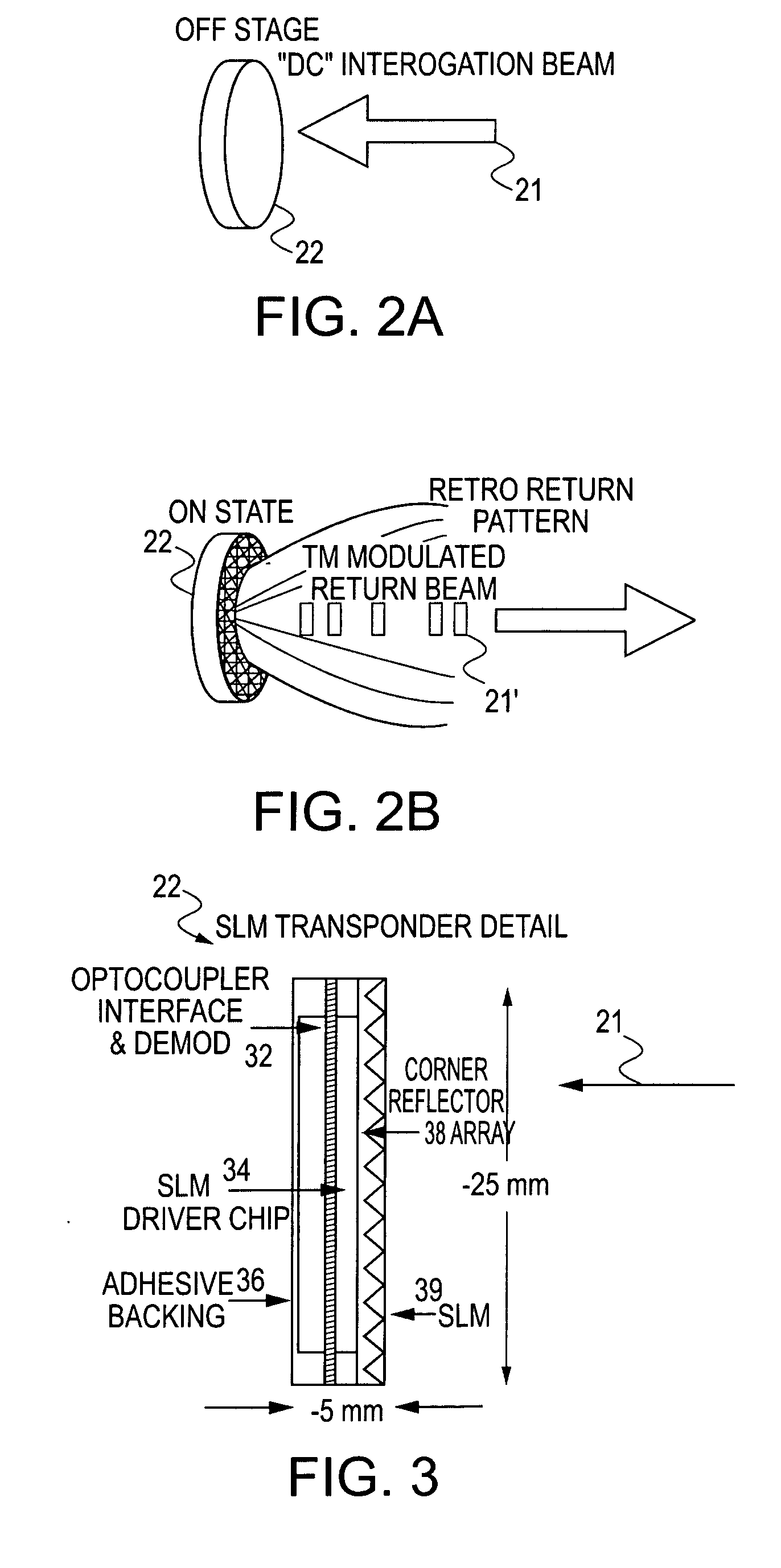Low-power photonic telemetry system and method for spacecraft monitoring
a low-power, spacecraft-based technology, applied in navigation instruments, instruments, transportation and packaging, etc., can solve the problems of spacecraft not having adequate link margins, tumbling too quickly, and further complicating the telemetry problem, so as to achieve efficient and timely integration, reduce the effect of rf, and reduce the number of r
- Summary
- Abstract
- Description
- Claims
- Application Information
AI Technical Summary
Benefits of technology
Problems solved by technology
Method used
Image
Examples
second embodiment
[0019] In accordance with the present invention, an optical communication system for relaying data is provided comprising an optical transponder for transmitting an interrogation beam and receiving a retransmitted interrogation beam, the optical transponder being mounted on a first vehicle; and a spatial light modulator (SLM) transponder for receiving the interrogation beam, adding data to the interrogation beam and retransmitting the interrogation beam, the SLM transponder being mounted on a second vehicle; wherein the first vehicle obtains status and location information of the second vehicle from the retransmitted interrogation beam.
third embodiment
[0020] In accordance with the present invention, an optical telemetry system for space vehicles is provided comprising an optical source for providing an optical signal for interrogation, the optical source being mounted on a first vehicle; a receiver for receiving the optical signal, the receiver being mounted on a second vehicle; a modulator coupled to the receiver for modulating the received optical signal; a transmitter coupled to the receiver for transmitting the modulated optical signal; and a receiving device for receiving the modulated optical signal, the receiving device being mounted on the second vehicle.
fourth embodiment
[0021] In accordance with the present invention, a method for obtaining data including location and status of a vehicle is provided comprising querying a first vehicle from a second vehicle using an interrogating beam; modulating the interrogating beam so that it contains information about the first vehicle and re-radiating the modulated interrogating beam; and receiving and demodulating by the second vehicle the modulated interrogating beam.
BRIEF DESCRIPTION OF THE DRAWINGS
[0022] The above and other objects, features and advantages of the present invention will become more apparent from the following detailed description when taken in conjunction with the accompanying drawings, in which:
[0023]FIG. 1 illustrates an optical spacecraft telemetry system according to an embodiment of the present invention;
[0024]FIGS. 2A and 2B illustrate the operation of a spatial light modulator (SLM) transponder which is queried by a DC interrogation beam according to an embodiment of the present i...
PUM
 Login to View More
Login to View More Abstract
Description
Claims
Application Information
 Login to View More
Login to View More - R&D
- Intellectual Property
- Life Sciences
- Materials
- Tech Scout
- Unparalleled Data Quality
- Higher Quality Content
- 60% Fewer Hallucinations
Browse by: Latest US Patents, China's latest patents, Technical Efficacy Thesaurus, Application Domain, Technology Topic, Popular Technical Reports.
© 2025 PatSnap. All rights reserved.Legal|Privacy policy|Modern Slavery Act Transparency Statement|Sitemap|About US| Contact US: help@patsnap.com



